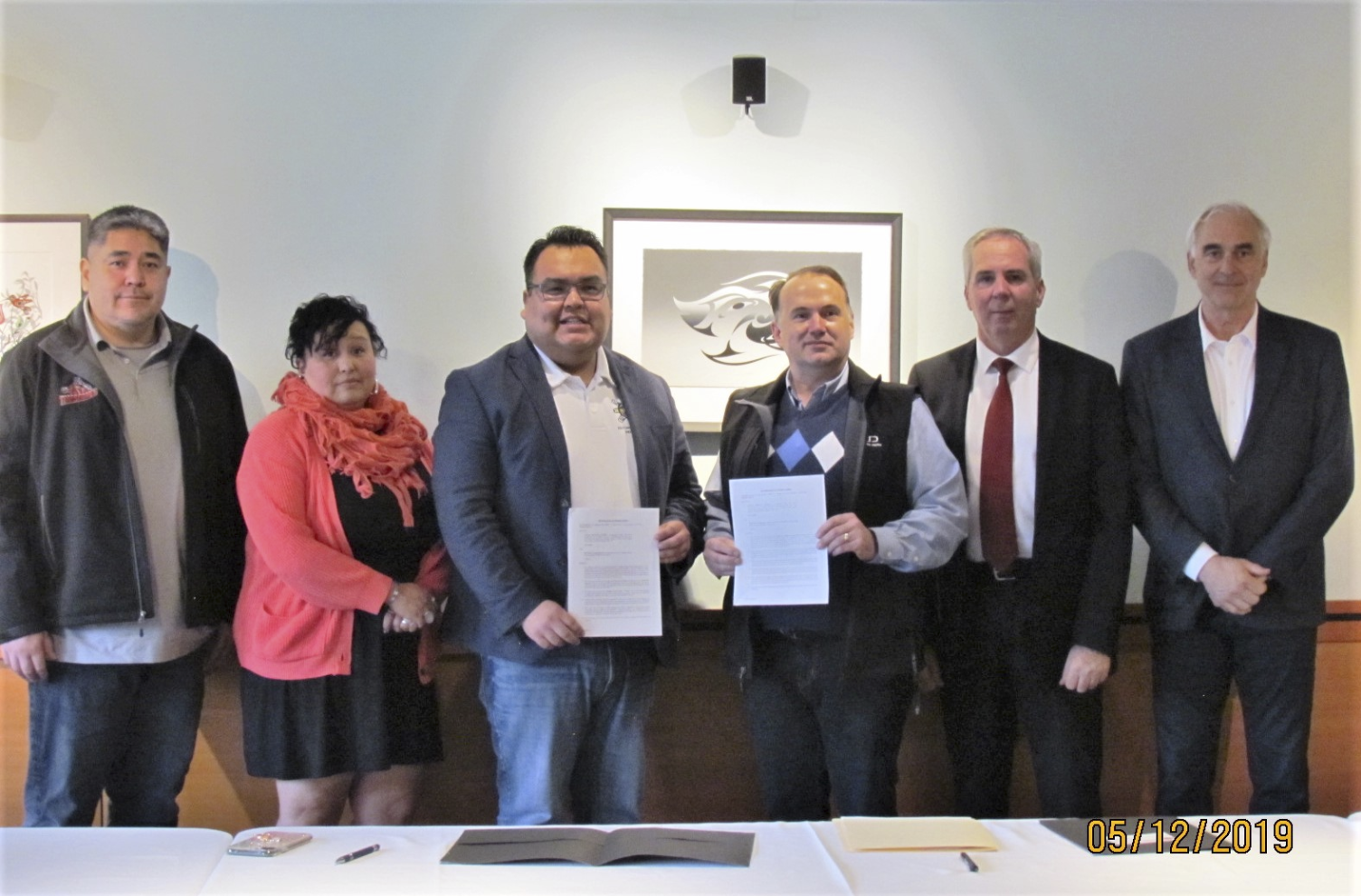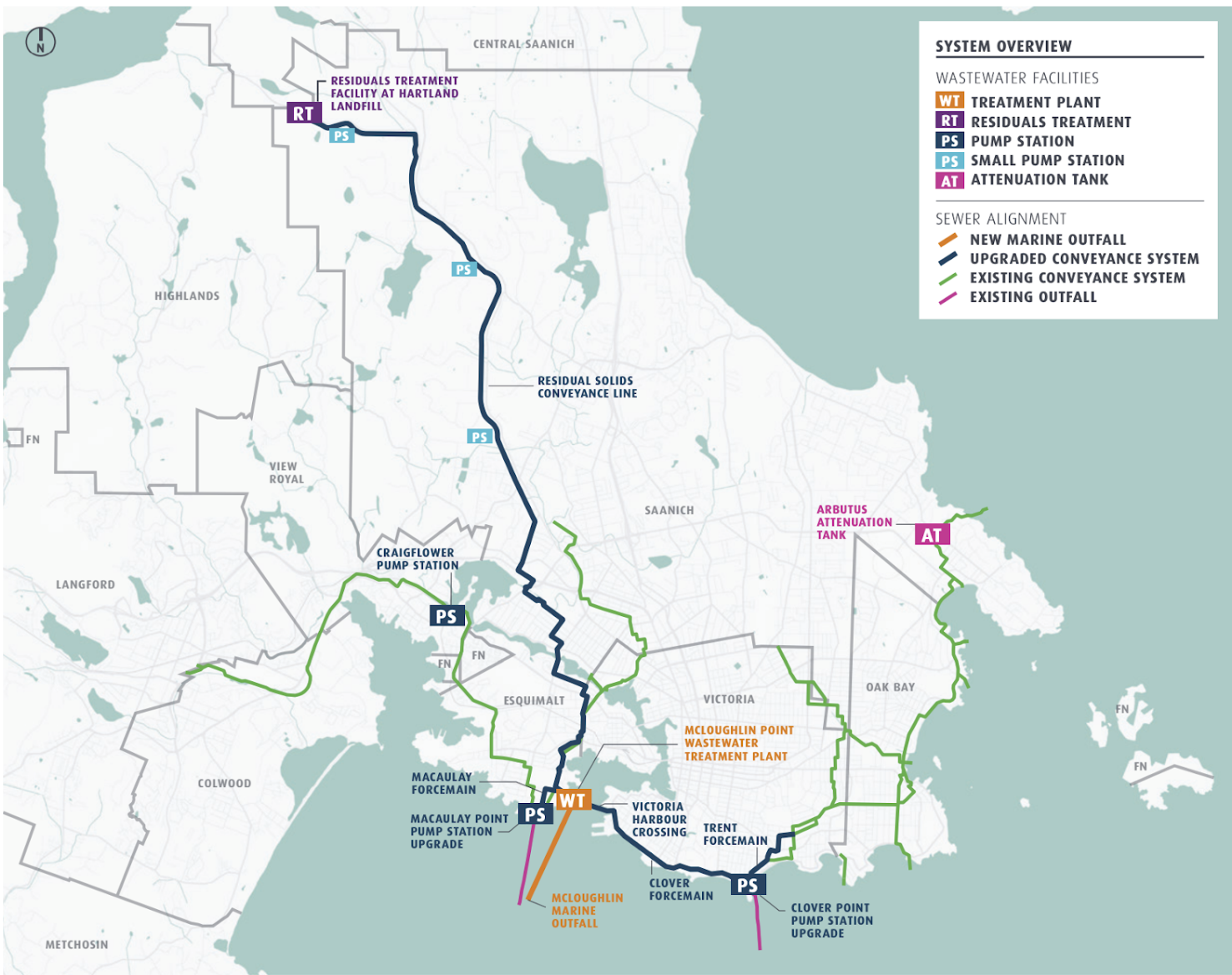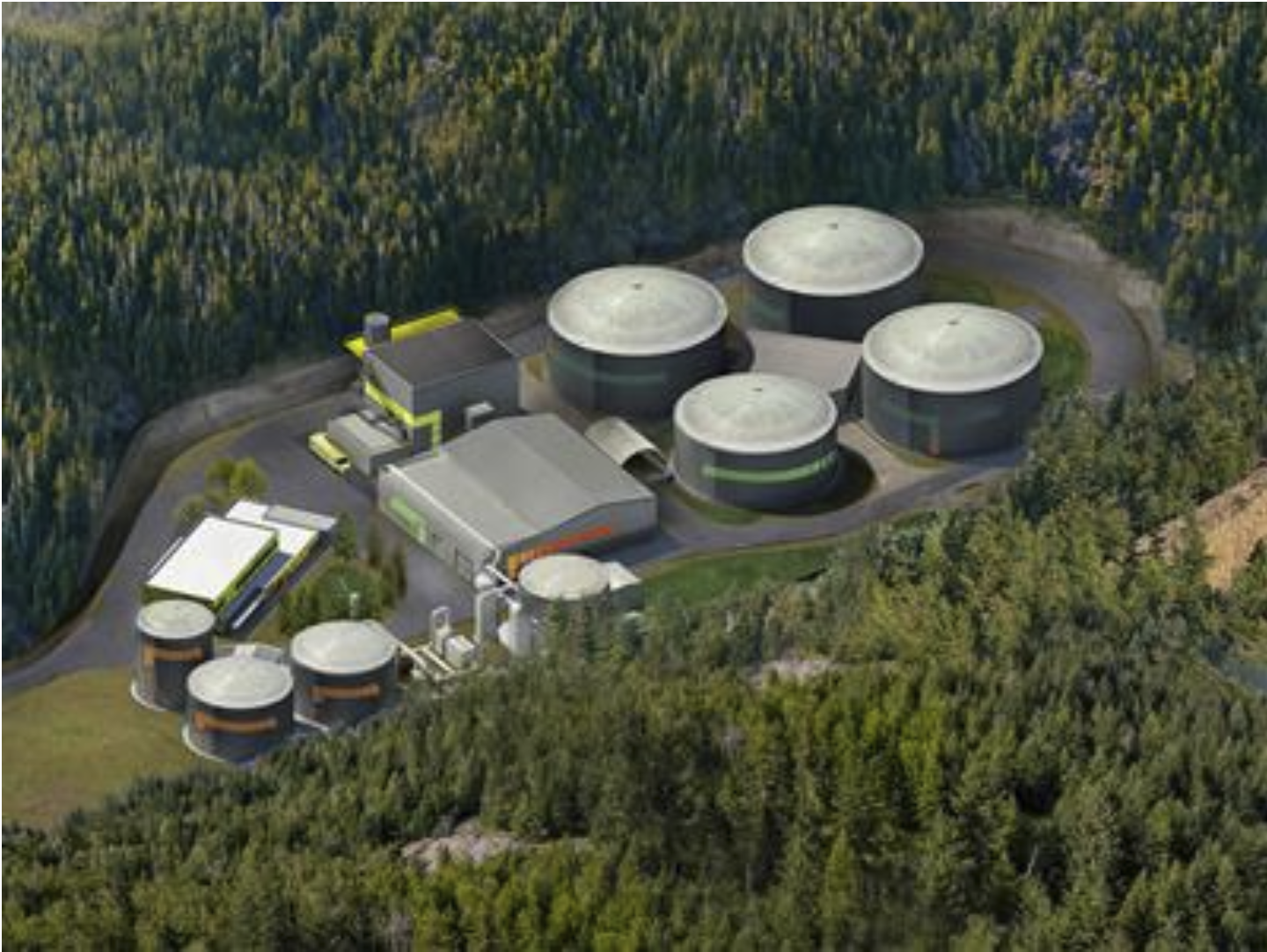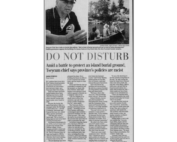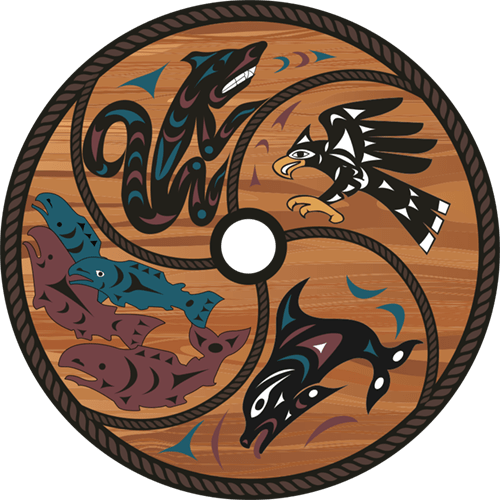The WLC reaches agreement to review Wastewater Treatment Project, enhance W̱SÁNEĆ sovereignty in the region, and renew W̱SÁNEĆ’s relationship with the CRD.
On December 5, 2019, the WLC and CRD signed a Memorandum of Understanding committing the parties to discuss the construction and operation of the CRD’s Wastewater Treatment Project within W̱SÁNEĆ territory.
The Wastewater Treatment Plant Project is a $775 million project being undertaken by the Capital Regional District to enhance wastewater treatment in the region. The project includes the following:
- A Wastewater Treatment Facility at McLoughlin Point to treat the wastewater and remove the residual solids,
- A Residuals Treatment Facility located at Hartland Landfill to process the residual solids sent from the Wastewater Treatment Facility, and
- Conveyance lines connecting the two facilities.
The Residuals Treatment Facility will accept and treat solids from around the CRD for the next 20 years.
Construction at the Residuals Treatment Facility began in 2018 and is slated for completion in 2020. The project received approval and funding from Federal and Provincial governments and is proceeding under the purview of the CRD. At no time during the approval process did the CRD adequately consult–or attempt to obtain consent–with the W̱SÁNEĆ First Nations.
This Memorandum of Understanding outlines an agreement to ensure that the W̱SÁNEĆ Nation is involved in the review of the project, that W̱SÁNEĆ Douglas Treaty rights are protected, and to promote W̱SÁNEĆ laws and jurisdiction.
The Memorandum provides the WLC with capacity funding to be distributed in the following six ways:
- Provide Funding for Past Meetings: Despite extensive consultation with Esquimalt and Songhees Nations, the CRD failed to adequately consult with or obtain consent from W̱SÁNEĆ people on the decision-making, construction, and operation of the facility at Hartland or the conveyance lines running through W̱SÁNEĆ territory. The W̱SÁNEĆ Leadership Council has had to expend a significant amount of money to bring the CRD to the table. The capacity funding allocated in this MOU will rectify this.
- Hire a W̱SÁNEĆ Liaison: Throughout the CRD’s Wastewater Treatment Project, the W̱SÁNEĆ people have been under-consulted and under-informed. By hiring a W̱SÁNEĆ liaison, the WLC will be able to ensure that W̱SÁNEĆ people are hired for jobs and are provided with training. The W̱SÁNEĆ liaison will also provide requests and recommendations from the WLC to the CRD related to mitigation and accommodation for impacts on Douglas Treaties.
- Develop an Information Sharing Protocol: The WLC and CRD will develop an information sharing protocol to ensure that the WLC is well-informed of all CRD activities within W̱SÁNEĆ territory.
The Residuals Treatment Facility at Hartland (shown above) is part of the larger $775 million dollar Wastewater Treatment Plant Project.
4. Fund W̱SÁNEĆ Technical and Traditional Knowledge Studies: The Project is located within W̱SÁNEĆ territory near the deer hunting places of W̱MÍYEŦEṈ and ₭ĆEMES. It is unclear what impact this project will have on W̱SÁNEĆ Douglas Treaty rights and the environment through both the construction and continued operation of the project. The results of these reports will be used to provide recommendations and requests from the WLC to the CRD. The WLC’s Environmental Committee is currently working to catalogue medicinal plants in the area and the results of this will be incorporated into the WLC’s studies.
5. Mitigate Potential Impacts to W̱SÁNEĆ: Once the Technical and Traditional Knowledge Studies are complete, the WLC will begin negotiations with the CRD to discuss the mitigation of any project impacts and discuss other forms of accommodation as needed. The WLC is very focused on protecting W̱SÁNEĆ Douglas Treaty rights, the natural environment, and this important deer-hunting place.
6. Establish Future Discussions: The Wastewater Treatment Project is only one element of the CRD’s activity within W̱SÁNEĆ territory. This Memorandum of Understanding commits the parties to future discussions about the broader relationship between the W̱SÁNEĆ Nations and CRD, the WLC’s role in CRD governance, protocols relating to consultation, the impacts of CRD’s operations on the rights and interests of the W̱SÁNEĆ Nation, and other items. One item that has been raised recently is the CRD’s use of W̱SÁNEĆ cultural monitors. Although this is not specifically dealt with in the MOU, the WLC will continue to push for the proper use of W̱SÁNEĆ cultural monitors, a point of contention vocalized during negotiations and at the Tsartlip’s peaceful protest at Hartland Landfill this summer.
The WLC is pleased to have obtained a written agreement with the CRD, formalizing their stated intent to improve the relationship between W̱SÁNEĆ people and the CRD, to pursue free, prior and informed consent as set out in UNDRIP, and to respect W̱SÁNEĆ Douglas Treaty Rights. Actions like these demonstrate an improved commitment by the CRD to respecting the rights, territory and culture of the W̱SÁNEĆ people.
Although the relationship between the CRD and W̱SÁNEC people has been fraught in the past, the W̱SÁNEĆ Leadership Council is encouraged by commitments made in the Memorandum of Understanding to have honest conversations about long-standing W̱SÁNEĆ concerns. While this is just a first step, we look forward to working together to create an environment where W̱SÁNEĆ laws and governance are no longer an after-thought.
– The W̱SÁNEĆ Leadership Council
RECENT POSTS
Although the relationship between the CRD and W̱SÁNEC people has been fraught in the past, the W̱SÁNEĆ Leadership Council is encouraged by commitments made in the Memorandum of Understanding to have honest conversations about long-standing W̱SÁNEĆ concerns. While this is just a first step, we look forward to working together to create an environment where W̱SÁNEĆ laws and governance are no longer an after-thought.
– The W̱SÁNEĆ Leadership Council


